The
powerful earthquake that struck the Kutch area in Gujarat at 8:46 am on
26 January 2001 has been the most damaging earthquake in the last five
decades in India. The M7.9 quake caused a large loss of life and property.
Over 18,600 persons are
reported
to be dead and over 167,000 injured; the number
of deaths is expected to rise with more information coming in. The estimated
economic loss due to this quake is placed at around Rs.22,000 Crores (~US$5
billions).
The earthquake was felt in most parts of the country
and a large area sustained damages. About 20 districts in the state of
Gujarat sustained damage. The entire Kutch region of Gujarat, enclosed
on three sides by the Great Runn of Kutch, the Little Runn of Kutch and
the Arabian Sea, sustained highest damage with maximum intensity of shaking
as high as X on the MSK intensity scale. Several towns and large villages,
like Bhuj, Anjaar, Vondh and Bhachau sustained widespread destruction.
The other prominent failures in the Kutch region include extensive liquefaction,
failure of several earth dams of up to about 20m height, damage to masonry
arch and RC bridges, and failure of railroad and highway embankments.
Numerous recently-built multistorey RC frame buildings collapsed in Gandhidham
and Bhuj in the Kutch region, and in the more distant towns of Morbi (
~125km east of Bhuj), Rajkot (~150km southeast of Bhuj) and Ahmedabad
(~300km east of Bhuj). At least one multistorey building at Surat (~375km
southeast of Bhuj) collapsed killing a large number of people. The strong
motion records obtained from the region at the Passport Office Building
under construction in Ahmedabad city, indicate a peak ground acceleration
of about 0.11g
[Source:
http://www.rurkiu.ernet.in/acads/depts/earthquake/bhuj/index.html].
A preliminary report prepared by IIT Bombay is available at
www.civil.iitb.ernet.in/BhujEarthquake/Earthquake_Web_Page.htm.
The state of Gujarat is the heartland of Indian industries like petroleum, power and steel. Indeed, this M7.9 earthquake is the first to hit metropolitan cities of the country in the recent times and the modern industrial constructions. Therefore, the performance of structures in this area will offer important lessons particularly from the points of view of efficacy of Indian codes and construction practices. While from an international standpoint, most of the damages now seen in the Kutch area may have already been known and documented after the past earthquakes across the world, experiences from here would serve as an excellent evidence for the Indian civil engineering community on the performance of its own traditional and modern constructions.
The following
provides a quick rundown of the salient structural and geotechnical damages
recorded during a reconnaissance survey to capture important lessons from
the aftermath of the quake conducted during 02-14 February 2001 by a
EERI team
of 16 investigators
jointly headed by Professor
Sudhir K. Jain of the Department of Civil Engineering,
Indian Institute of Technology
Kanpur, and
Dr. William Lettis of William Lettis & Associates, Inc,
USA. The investigators included
geologists, seismologists, geophysicists, geotechnical engineers, structural
engineers, and emergency managers. The investigation was supported by
the Earthquake Engineering Research Institute (EERI),
Department of Science and Technology, Government of India, New Delhi,
and Indian Institute of Technology Kanpur.

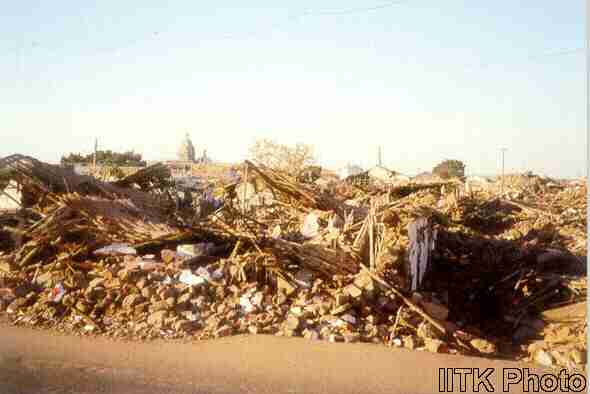
A common site of destruction of the villages in the meizoseismal area.
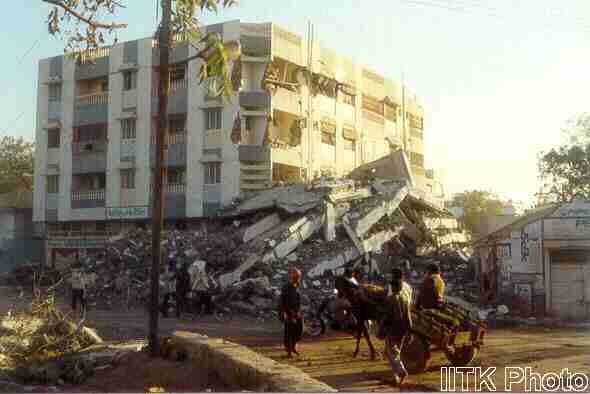
Many surprises for common man: adjoining buildings with radically different performances!!

Common man learns: even RC frame buildings can break apart!!
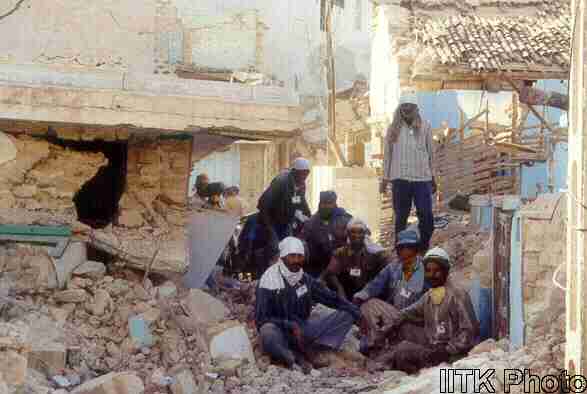
Rubble of collapsed buildings being cleared at Anjaar. Narrow lanes caused significant casualties and made rescue and relief very difficult. Kudos to the rescue/relief workers for their daring efforts!!
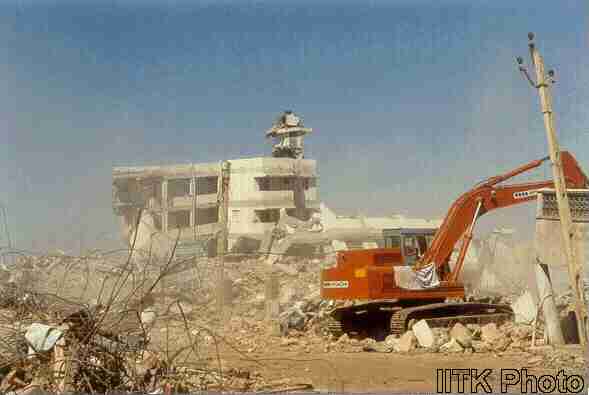
Virtually nothing could be recovered from most RC frame buildings that collapsed. Clearing of debris from collapse of numerous multistorey RC frame buildings was an even bigger challenge.
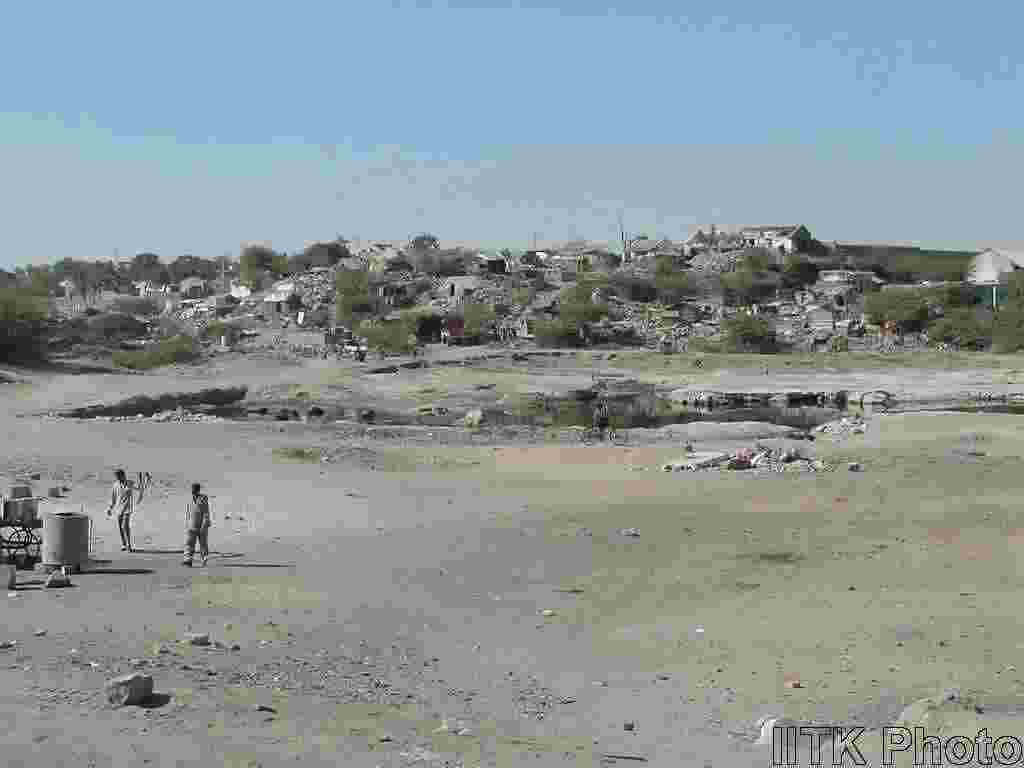
A depressing scene of a village after the earthquake.

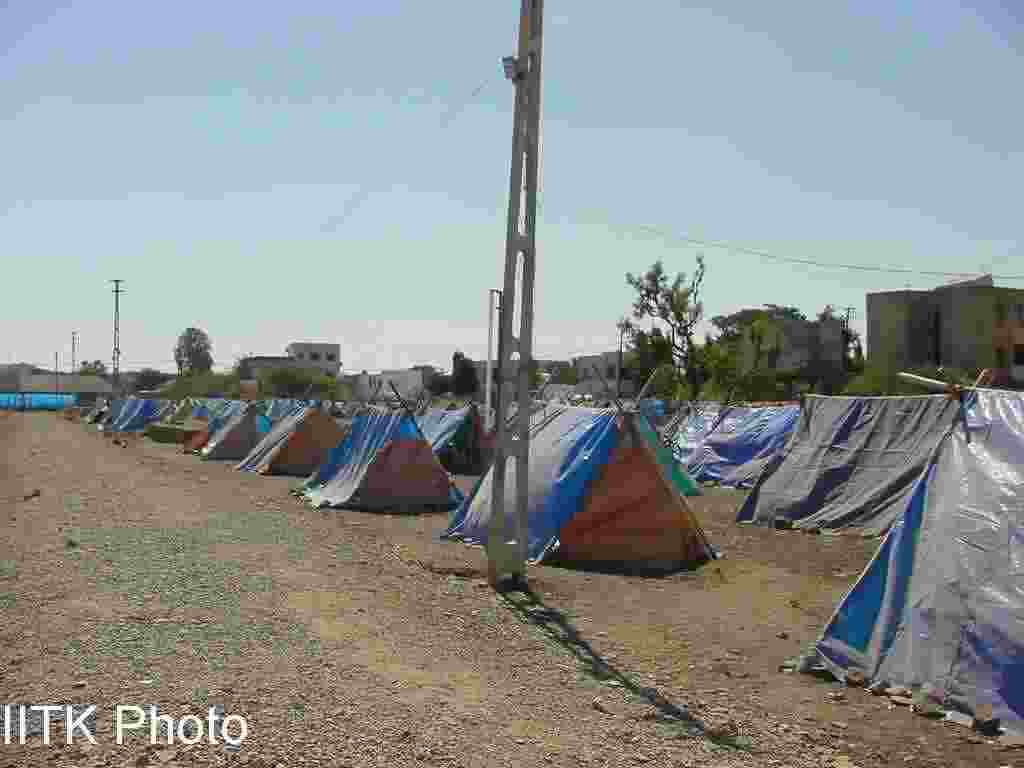
Relief distribution after the earthquake. Temporary shelters in the town of Morbi.